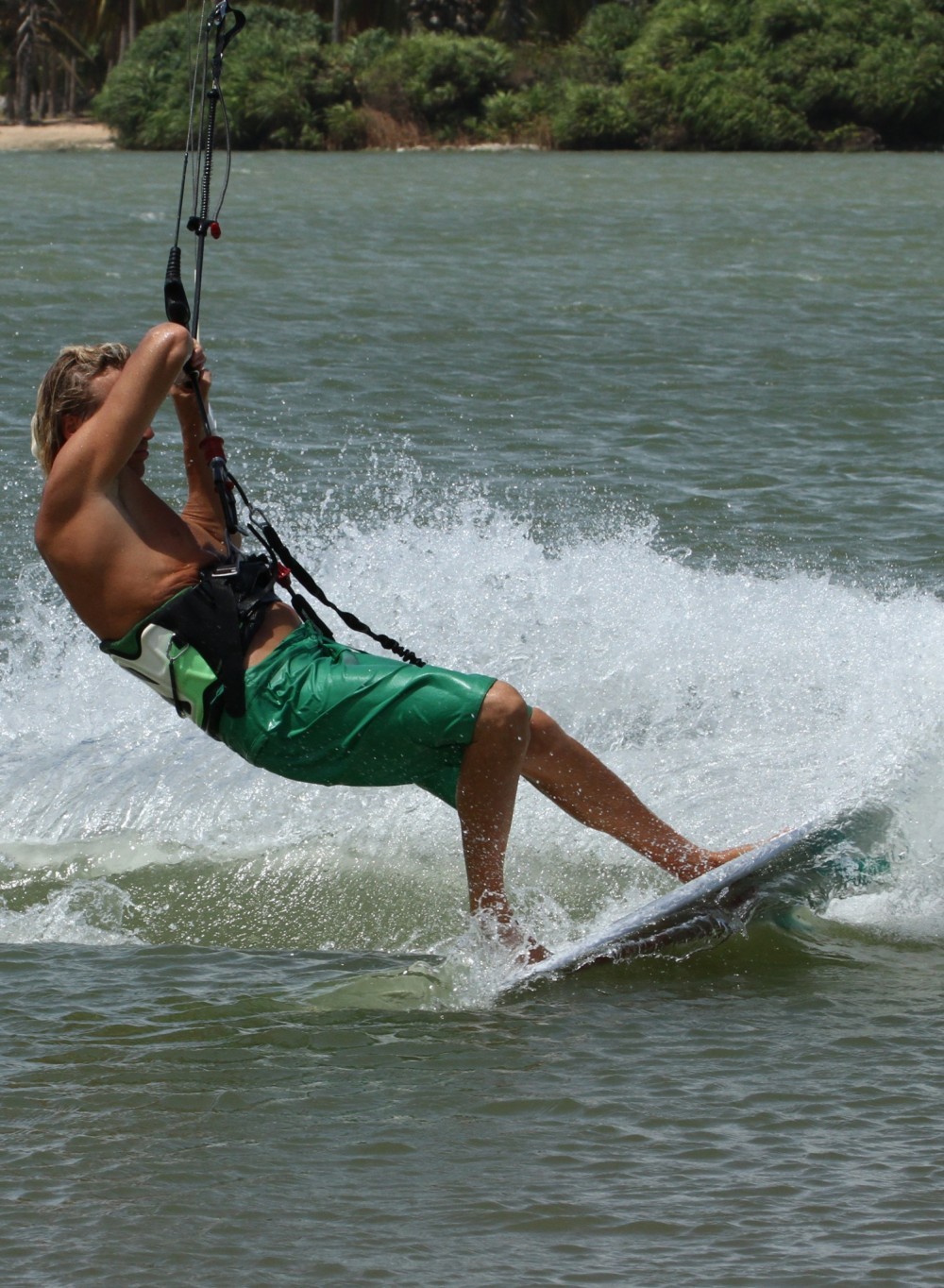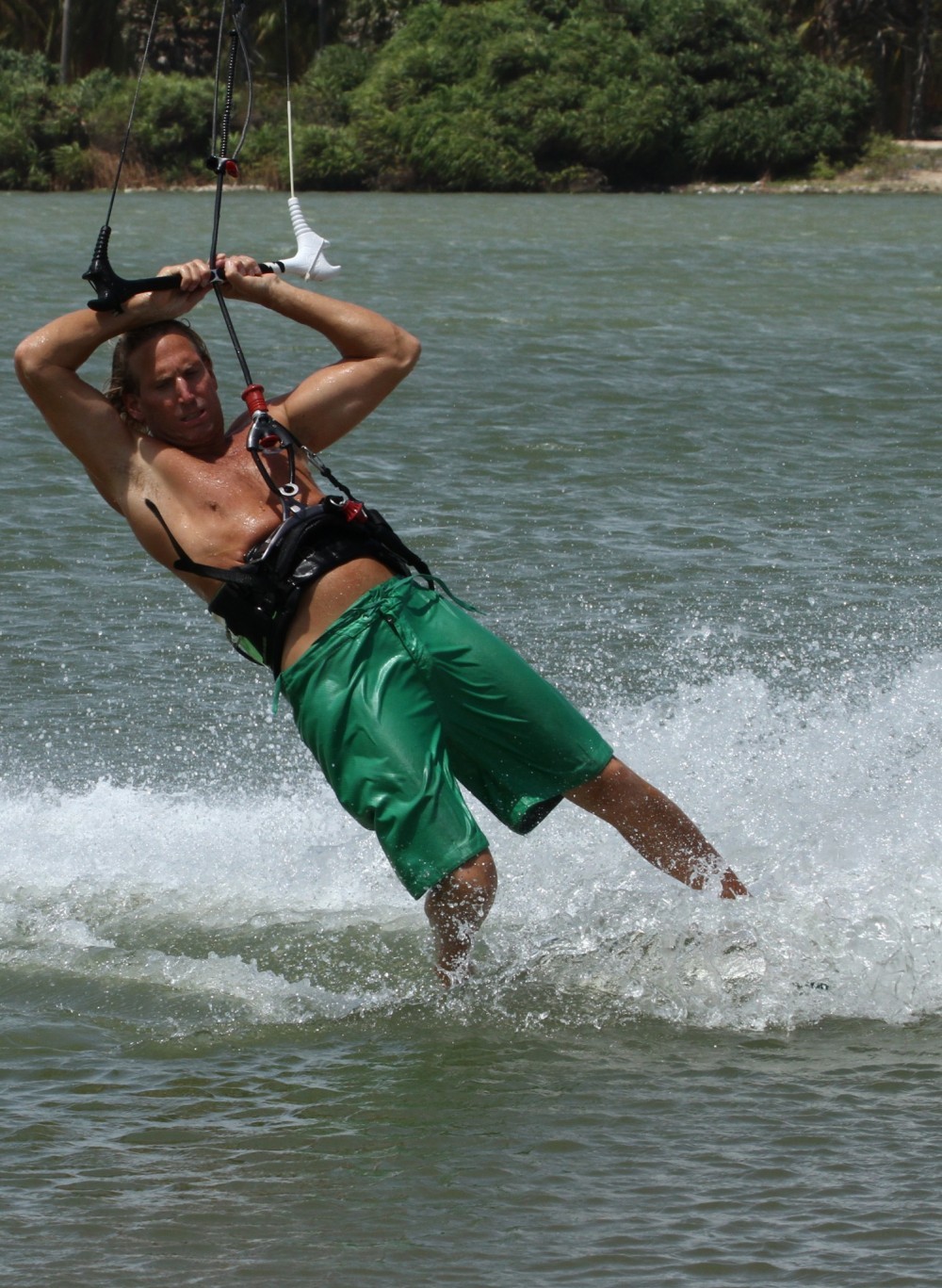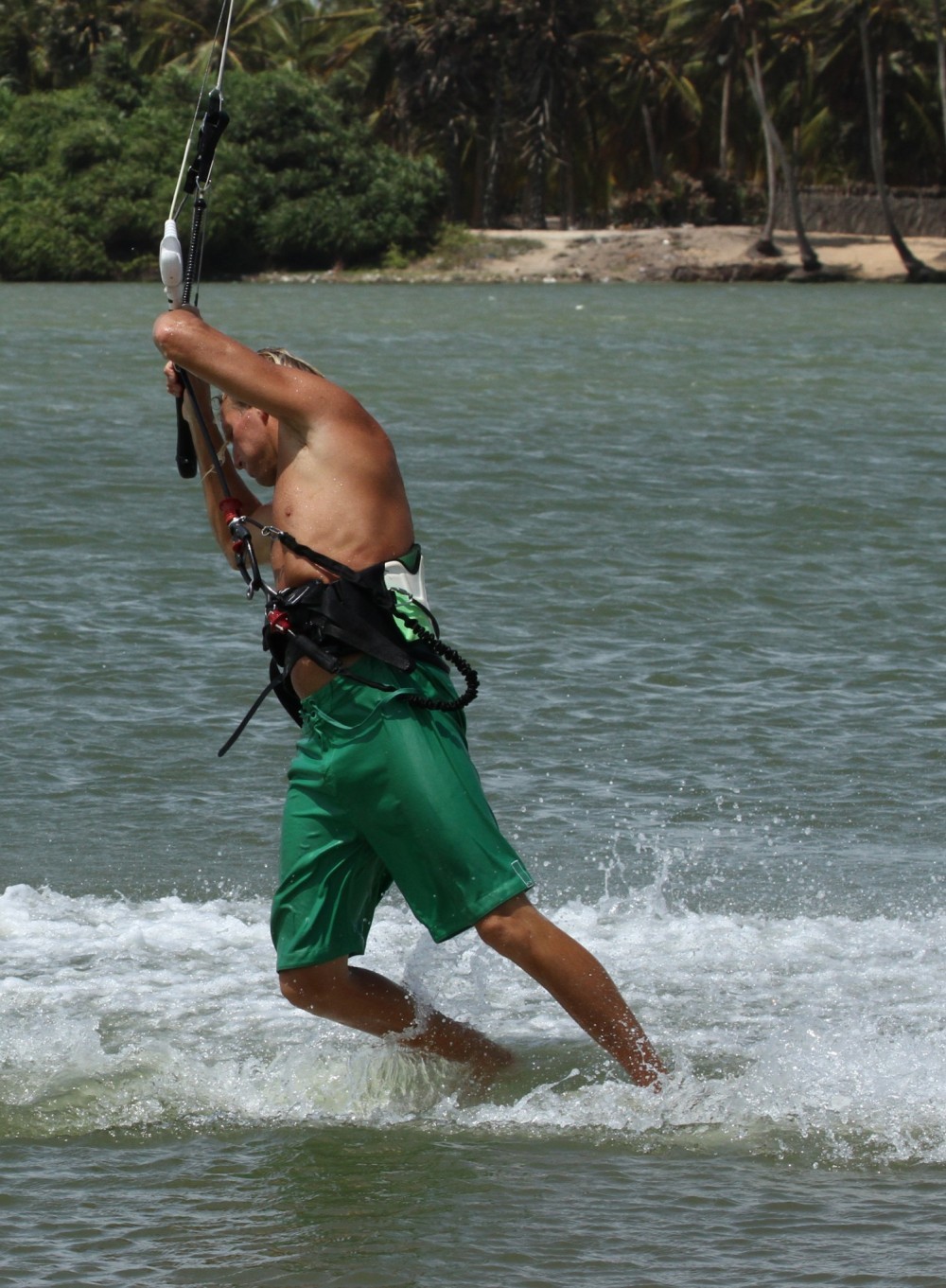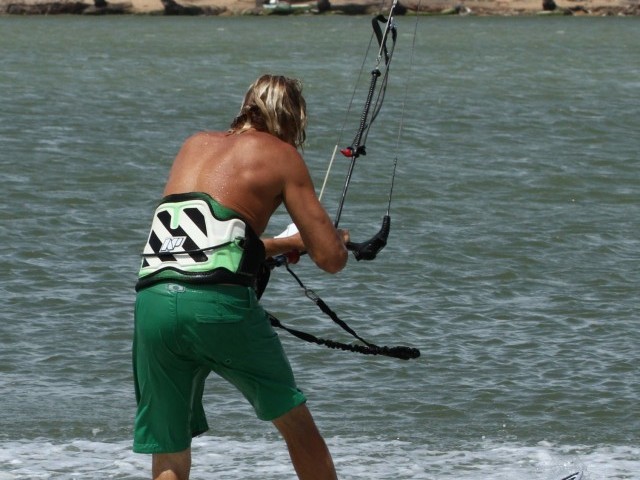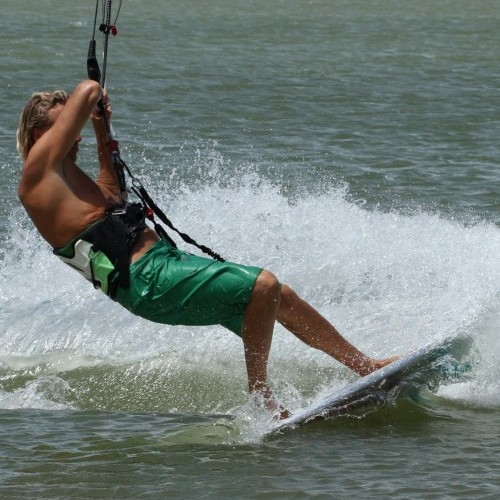
Strapless Upwind 360
Technique / Intermediate
Introduction
This is another fun strapless move to try on the flats, which you can take out into the waves. As the name suggests the idea here is to turn yourself and the board up into the wind, and keep going so that you come out having not moved or changed your feet and still going in the same direction – a full 360˚. Essentially you carve your board up through the wind as you would for a tack, and then keeping your feet in place perform a duck tack and pivot the now sinking board so that the nose continues to turn, this time downwind so that you can merrily ride off as if nothing happened. Theoretically quite simple but there’s a lot of head patting and tummy rubbing at the same time.
The Carve
First off before you start make sure you’re edging the board and have your feet and body weight in the right place, as you want to carve the board, not slide it. To give yourself a few extra valuable seconds we’d also suggest that you don’t come in too fast. Your front foot needs to be far enough forward that when you’re standing on the momentarily stationary board you can keep it flat and not sink in backwards. Too far forward and you’ll encourage the fins to slide out as you try and carve. Your back foot wants to be straddling the centre line over or just forward of the front fins so that you can really drive against the rail and back of the board, to turn the nose round as much as possible. Your weight needs to be over the back foot so that you can turn the board sharply, but don’t bend your back leg too much, as this will drop the hips too far back, and then it’ll be hard to bring your weight forward when you need to.
In Pic A. you can see Christian is drifting the kite up towards 12, letting the bar out as he carves so that the kite doesn’t prevent him from turning his body and the board upwind. He’s driving through the back foot and has the board edging/railing hard.
Stay On The Rail
Your aim here is to turn the board the maximum amount until it stops with you kite close to 12 o’clock. Once the nose of the board has turned through the wind with minimum sliding of the tail, you need to keep the board moving, maintaining the carve. Stay on the rail, this way you can push against the board with your back leg without the tail sliding out. Your weight will naturally move towards the nose of the board as you push your back leg away. This is a good thing as it’ll prevent you from sinking the tail, and it will position you over the board rather than leave you hanging downwind of the board.
Pic B. Christian is simultaneously driving against the back of the board to keep it turning, as his hips move forward as a result of his back leg straightening, he pulls in on the bar for support and pulls his front leg underneath him to get his weight over the board so that he’ll be able to stand on it.
Stand Up
As the board comes to a complete stand still the only thing on your mind should be to stand up. Don’t think ahead, as nothing else will be possible unless you can get yourself into a neutral position, balancing on the board. Looking at Pic C. if Christian was to fall now it would likely be onto his right hand side, so this is what he needs to prevent. To balance Christian must prop himself up on his front leg, so he pushes down onto his front (right) foot which will support him. At the same time Christian will lift his head and shoulders so that they are over his hips. In this position he will be stable enough to balance on the board for a few nanoseconds whilst he gets everything to turn down wind.
Push It
Now that you’re balanced-ish, you need to get the bar to the other side, so that it’s leading you, and get you weight back towards the back leg. The movement is similar to a duck tack without moving the feet, or an Ole. You’ll need to dump all tension from the lines so that the kite doesn’t pull you so that you can man handle the bar across. As the bar moves you should follow it with your head and shoulders, but don’t spin your body or else you’ll loose your balance.
In Pic D. Christian has pushed the bar away from him to slacken the lines, he then pushes his hands across his body and turns his head and shoulders to follow it. During this movement he must still support himself on his front leg and make a real effort to push his weight back, moving his hips over his back foot as he extends his front leg. Finally Christian will start to pull on his front hand to get the kite moving for some power to get the board up and going.
Dive & Go
If you get the bar across you and get your weight back the board will pivot through the downwind point and keep turning. You need to get the power on to stop the board spinning back into wind and throwing you off the back, so get the bar in and keep pulling on your front hand. In anticipation of the power you will need to get your bum and shoulders back upwind of the board so that you don’t get pulled up, over and off the board.
Pic E. shows that Christian’s weight is back, so the board was able to pivot, and with the nose up it will move as soon as the power comes on as long as Christian gets his weight upwind of the board. This part should be the same as exiting a tack, or beach start.
Top Tips
For your first attempts concentrate on a good carve up and through the wind, to find out how much speed you need for your board and see how far you can turn it without overly sliding and without dropping in downwind.
Once you’re comfortable with the carve concentrate on lifting the kite for support, and at the same time keep it the original side of 12 o’clock. So if you’re going to the right as in the Sequence and Videos don’t bring the kite past 12:15. This will help you turn the board.
Finally visualise it as a slow movement. If you throw your body and the bar willy nilly you’ll just spin off the board and have no chance of either balancing or taking the board with you for the full 360˚.
Common Mistakes
Coming in fast and powered. If you’re too fast you’ll struggle to carve enough and be more likely turn the board flatter, leading to the fins breaking out and the board sliding. If you have too much power and the bar is far from you, it will be difficult to turn hard upwind regardless of speed. So control your speed and trim your kite.
Falling down wind of the board. Two possible reason. Firstly if you slide the tail, your back leg will over extend and you’ll end up too low. Secondly if your kite is too far forward and low in the window, it’ll pull you off the board when you need it for vertical support.
Board not turning through downwind. If your weight stays on the front foot the board will support you but it won’t pivot - so throw those hips back. Also if your kite sits right above you or even worse slightly behind you there will be nothing to pull you through. This is the head and tummy bit, as you need to be aware of the kite’s position and get it moving as you push through the movement.
Keystones
- Carve upwind using your rail
- Push through you back leg to get through the wind
- Support yourself with front leg and kite
- Push slowly
- Throw your weight and hips back whilst diving the kite
This technique article was in Issue 41 of IKSURFMAG.
Related
By Christian and Karine
Christian and Karine have been working together as a coaching team, running improver to advanced kitesurfing clinics since 2003.










